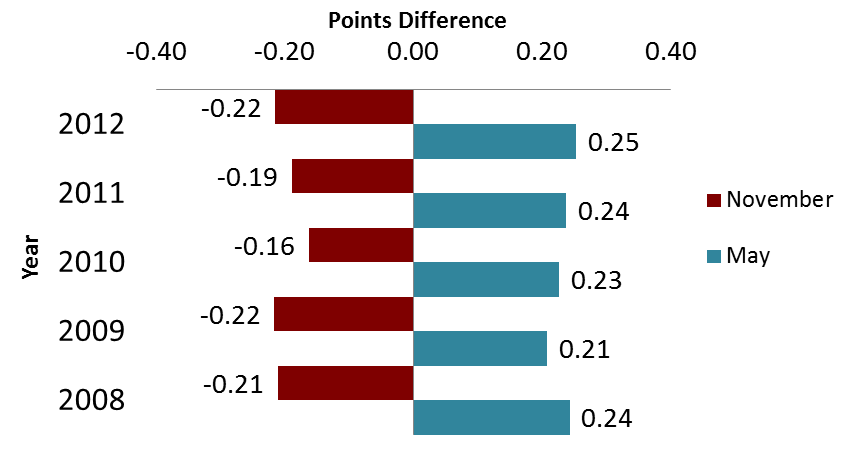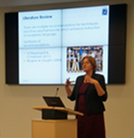How do International Baccalaureate (IB) students perform when learning in a second language? Which students pursue the bilingual diploma? How does their performance compare with standard diploma candidates?
To address these questions and more the IB Global Centre, Bethesda recently welcomed Keira Ballantyne of the Center for Applied Linguistics (CAL) and Tracy Tressler of the Center for Equity and Excellence in Education (CEEE) at The George Washington University.
Their presentation, “Learning in two languages in the DP,” provided a unique opportunity for researchers, IB staff and educators to discuss new research related to the Diploma Programme (DP). In their presentation, the researchers discussed the findings of two recently completed studies and offered the audience an exciting peek into ongoing research.
Perhaps most interestingly, when discussing their findings in Language proficiency for academic achievement in the International Baccalaureate Diploma Programme, the researchers revealed that, between 2008 and 2012, second language DP students who took their DP examinations in May performed better on their exams than all DP students (second and first language candidates included). Conversely, second language DP students who took their examinations in November, as occurs in most Latin American schools, performed less well than all students on their DP exams. More research will be needed to investigate this potential discrepancy and to consider providing additional supports to struggling regions and schools.

Figure 1. Points difference in average grade between second language DP candidates and all candidates
Based on this same study, the researchers also offered a series of recommendations for the IB to better support second language IB students. Among these recommendations, the researchers stressed the importance of:
- supporting mother tongue language and literacy;
- ensuring that all teachers have preparation in academic language pedagogy[1] and
- increasing instruction in subject-specific academic language.
During their discussion of Factors influencing students to earn a bilingual diploma—their second study—the researchers revealed that while academic performance differs little between students who pursue the bilingual diploma versus the standard diploma, students are substantially more likely to pursue the former if they have prior academic knowledge of two or more languages (see Figure 2). This is a situation that occurs more often in non-English speaking countries. IB students in non-English speaking countries typically are in situations where there is value in acquiring English as an international language. In these settings, school resources and qualified staff are often made available to support students in pursuing academic learning in a second language.
[1] The researchers recommend that all teachers should be prepared to integrate academic language pedagogy into the teaching of the disciplines (i.e. not just language teachers). Professional development and instruction can support teachers in this practice.


